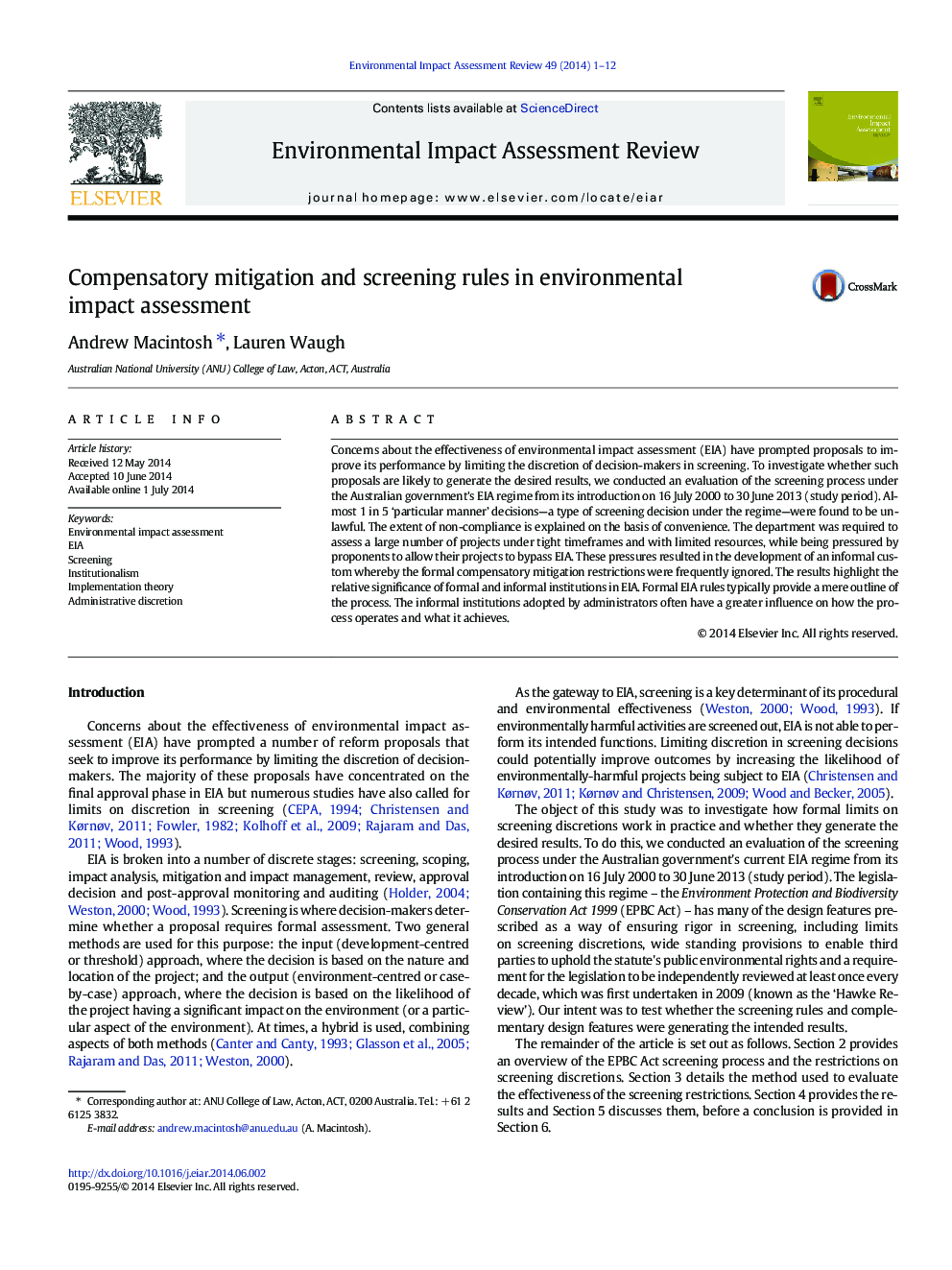| کد مقاله | کد نشریه | سال انتشار | مقاله انگلیسی | نسخه تمام متن |
|---|---|---|---|---|
| 1052713 | 1484996 | 2014 | 12 صفحه PDF | دانلود رایگان |
• Concerns about the effectiveness of environmental impact assessment (EIA) have prompted proposals to improve its performance by limiting the discretion of decision-makers in screening.
• To investigate whether such proposals are likely to generate the desired results, we conducted an evaluation of the Australian government's screening process, looking at the extent of compliance with a formal prohibition on the consideration of compensatory mitigation.
• Almost 1 in 5 ‘particular manner’ decisions – a type of screening decision under the regime – were found to be unlawful (with a 95% confidence interval of between 1:4 and 1:7) because of a failure to abide by the compensatory mitigation restrictions. For urban development actions, the ratio between lawful and unlawful particular manner decisions was worse than 1:1.
• The extent of non-compliance is explained on the basis of convenience. Budget and interest group pressures resulted in the development of an informal custom whereby the formal compensatory mitigation restrictions were ignored.
• The results highlight the relative significance of formal and informal institutions in EIA. Formal EIA rules typically provide a mere outline of the process. The informal institutions adopted by administrators often have a greater influence on how the process operates and what it achieves.
Concerns about the effectiveness of environmental impact assessment (EIA) have prompted proposals to improve its performance by limiting the discretion of decision-makers in screening. To investigate whether such proposals are likely to generate the desired results, we conducted an evaluation of the screening process under the Australian government's EIA regime from its introduction on 16 July 2000 to 30 June 2013 (study period). Almost 1 in 5 ‘particular manner’ decisions—a type of screening decision under the regime—were found to be unlawful. The extent of non-compliance is explained on the basis of convenience. The department was required to assess a large number of projects under tight timeframes and with limited resources, while being pressured by proponents to allow their projects to bypass EIA. These pressures resulted in the development of an informal custom whereby the formal compensatory mitigation restrictions were frequently ignored. The results highlight the relative significance of formal and informal institutions in EIA. Formal EIA rules typically provide a mere outline of the process. The informal institutions adopted by administrators often have a greater influence on how the process operates and what it achieves.
Journal: Environmental Impact Assessment Review - Volume 49, November 2014, Pages 1–12
